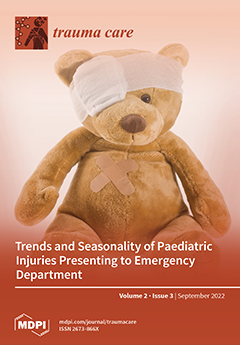Open AccessArticle
HIV Prevalence among Injury Patients Compared to Other High-Risk Groups in Tanzania
by
Loren K. Barcenas, Anna Tupetz, Shay Behrens, Arthi S. Kozhumam, Eleanor Strand, Megan von Isenburg, Philoteus A. Sakasaka, Matthew P. Rubach, Joao Ricardo Nickenig Vissoci, Lawrence P. Park, Janet Prvu Bettger, Blandina T. Mmbaga and Catherine A. Staton
Viewed by 2866
Abstract
Sixty-eight percent of persons infected with HIV live in Africa, but as few as 67% of those know their infection status. The emergency department (ED) might be a critical access point to HIV testing. This study sought to measure and compare HIV prevalence
[...] Read more.
Sixty-eight percent of persons infected with HIV live in Africa, but as few as 67% of those know their infection status. The emergency department (ED) might be a critical access point to HIV testing. This study sought to measure and compare HIV prevalence in an ED injury population with other clinical and nonclinical populations across Tanzania. Adults (≥18 years) presenting to Kilimanjaro Christian Medical Center ED with acute injury of any severity were enrolled in a trauma registry. A systematic review and meta-analysis was conducted to compare HIV prevalence in the trauma registry with other population groups. Further, 759 injury patients were enrolled in the registry; 78.6% were men and 68.2% consented to HIV counseling and testing. The HIV prevalence was 5.02% (tested), 6.25% (self-report), and 5.31% (both). The systematic review identified 79 eligible studies reporting HIV prevalence (tested) in 33 clinical and 12 nonclinical population groups. Notable groups included ED injury patients (3.53%, 95% CI), multiple injury patients (10.67%, 95% CI), and people who inject drugs (17.43%, 95% CI). These findings suggest that ED injury patients might be at higher HIV risk compared to the general population, and the ED is a potential avenue to increasing HIV testing among young adults, particularly men.
Full article
►▼
Show Figures



